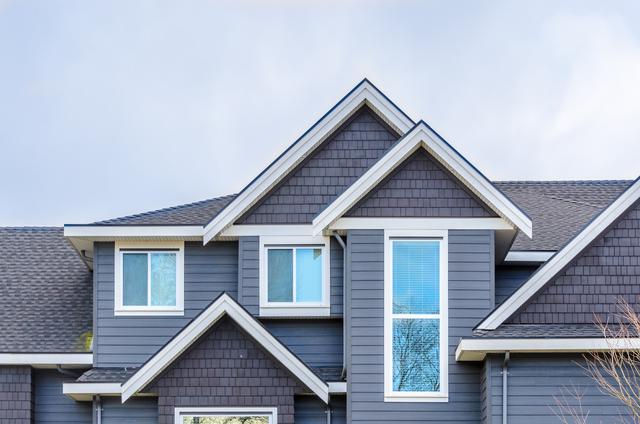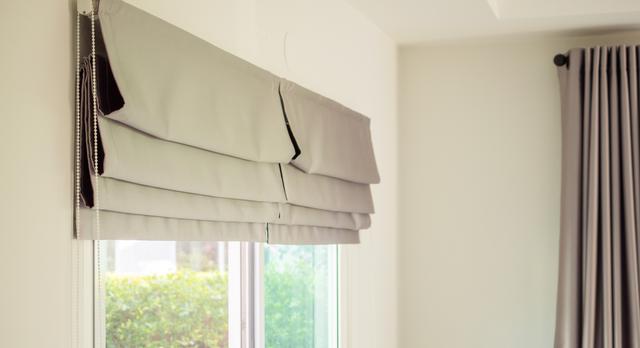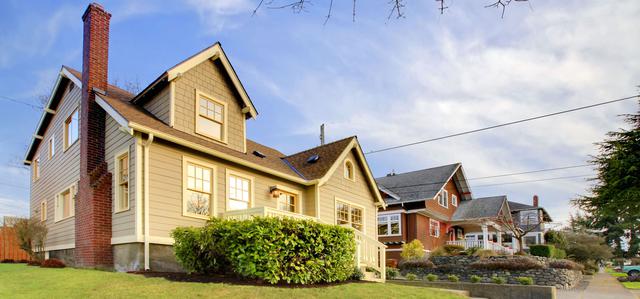There’s no shortage of ideas when it comes to window treatments. Blinds, drapes, and anything of the like often serves both form and function. In terms of the latter, they are the barrier between the interior and exterior spaces, essentially shielding from harsh sunlight during the day and providing privacy at night. As for aesthetic value, a window treatment can either be a subtle backdrop to a vibrant interior or serve as a feature in and of itself with rich colors and patterns. That being said, window dressings deserve their fair share of your budget. They are, after all, the final touch to your interior design. With a myriad of ideas to choose from, you are sure to find one that sits well with your living spaces.

Stained Glass Is a Unique Option for Window Treatments
You’ll be surprised to find out that there’s more to stained glass windows than their beauty. While the colorful shadows they cast are no less fascinating, these treatments serve a function as well. Stained glass windows can brilliantly create privacy by blocking the view of a busy street. If you’re looking for a unique way to inject color and create a visual barrier without sacrificing natural light, stained glass windows can be a great option.
2. Patterned Roman Blinds

Roman Blinds Are Popular Ways to Dress Your Windows
A charmingly patterned roman blind might be all you need for window treatments. The blind provides much-needed softness as well as character to an understated bathroom. A pink and white polka dot pattern, for instance, can be the pop of color that elevates a subtle design.
Since bathrooms are typically humid areas, adequate ventilation is important to protect the treatments — as well as other elements — from mold and mildew. It can also be a good idea to steer clear of full-length blinds that hang all the way down to the floor. In addition, consider lightweight options that enhance privacy while allowing for natural light to be filtered through. Lightweight fabrics also tend to dry quickly should they go damp.
3. Natural Materials

Rattan Blinds Are Ideal for Design Styles That Focus on Natural Elements
A rattan blind can be a go-to option for interiors that focus on the use of natural materials. This form of window treatment does its part in creating privacy in a simple yet stylish manner. The material is also thin enough for natural light to pass through the seams.
If your living spaces feature earthy designs such as biophilic, Boho, or Scandinavian, rattan blinds can perfectly accentuate the style. Consider placing a couple of small houseplants on the windowsill to underline the natural charm of the rattan.
4. Louvered Shutters

The Color of Louvered Shutters is Key to How They Affect a Room
Louvered shutters are commonly known for their country-style charm and elegance. Their ability to minimize noise, dust and cold air makes them ideal for bedrooms. You may, however, want to account for the effect of shutters on the level of lighting in a room. It is also worth mentioning that this effect generally depends on the color of the shutters — the darker the color, the dimmer the natural light.
The shutter color also affects that of the light that is filtered through. White shutters, for instance, will normally reflect white light whereas shutters painted in yellow will reflect a sunny hue. Grey or pale blue shutters, on the other hand, will tone down a bright room.
5. Full-Wall Treatment

Window Treatments That Extend Throughout the Wall Can Make a Room Appear Bigger
Curtains that extend from the floor to the ceiling can cleverly create a sense of height while maintaining a clean aesthetic. The trick is to place fixtures as high as possible so that the curtains are positioned above the top side of the window frame. This essentially draws the eye upwards and creates the illusion of a taller room. You can even spread the drapery throughout the width of the wall for an even more dramatic effect. Consider pairing the curtains with blinds to help filter light coming in through the open sections.
6. Warm-Colored Drapes

How to Create a Golden Hour Effect in Your Room
If you’ve ever had the pleasure of lounging around during golden hour — the time of day when daylight is reddish and soft —you’d probably know where this is going. Since colored window treatments are known to alter the color of the light that shines through, you can use this tactic to create a golden hour that lasts all day. Naturally, you’ll want to go for a bright yellow or a light orange shade in order to achieve the sought-after effect. Consider pairing the warm-colored curtains with natural elements and complementary hues for a cohesive look.
7. Floral Curtains

Floral Curtains Can Serve as a Focal Point of a Living Space
Consider making a design statement by going for curtains with floral patterns. Depending on the dimensions, this option can either serve as a whole feature or an accent to the rest of the interior. A piece of sheer fabric will even allow light to seep through, creating a charming atmosphere like no other. The floral design of the curtains can also serve as a hero pattern around which you can introduce colors, textures, and prints. This essentially hands the spotlight to the design while injections of color and other elements offer depth to create a cohesive interior.
8. Corresponding Details

Choosing the Right Window Treatment Color Is Key to Maintaining a Cohesive Design
To achieve a harmonious design when choosing a curtain, you’ll typically want to get the color right. The best way to do this is by matching it to the existing palette. This involves allowing the key colors to take the front seat throughout the rest of the interior. For instance, the shades that you see on the curtain will also need to be present on the sofa, the lampshade, and the table cover. You can take the composition to another level by having similar or identical patterns across different elements. One patterning idea involves matching the drapery with the throw pillows — while the color palette takes care of the rest.
9. Venetian Blinds

Venetian Blinds Are Inexpensive Alternatives to Shutters
If you’re remodeling your home on a budget or temporarily furnishing a rental, Venetian blinds can offer both practicality and a sleek look. This form of window treatment resembles shutters from the outside while being lower on the price spectrum. As with shutters, however, Venetian blinds are known for gathering dust. Going for white or pale finishes can make it easier to disguise this while maximizing natural light. Venetian blinds also feature adjustable slats (aka louvers) that allow you to control the brightness of your living space, in addition to maintaining privacy.
10. Treatment Layering

Pairing Different Types of Window Treatments Is a Common Interior Design Technique
If you can’t choose between two different types of window treatments, why not go for both? For instance, you can perfectly team Roman blinds with curtains. This design idea works best if you have a series of adjacent windows. Essentially, the roman blinds would cover the windows while partial curtains conceal the wall space between each opening. In certain cases — and depending on the type of fenestration you have — this can make the windows appear larger than they actually are. As for the colors of the curtains and the blinds, you can either go with similar hues or you can have one complement the other.
11. Window Awning

Window Awnings Are Ideal Options for a Mediterranean Design
Window treatments don’t always have to be from the inside. Consider giving the outside of your window some attention by treating it with an awning. Available in a huge variety of colors and patterns, awnings provide aesthetic value while shading the window from the sun. If you have a brick or stucco wall exterior, for instance, you could go for a Mediterranean look by installing a teal awning with tan stripes to accentuate the style. Teaming it with a flower box can bring out the village vibes.
12. Folding Screen

Folding Screens Can Be Perfect Make-Shift Window Treatments
One of the most useful elements of interior design you can have in your house is a folding screen. Not only does it provide architectural dimension, it can also function as a window treatment without the need for any installations. The variety of colors and patterns that folding screens are available in allow them to offer the same aesthetic value as conventional window dressings; and when positioned strategically, they can even serve the same function.
13. Cornice Boards

Cornice Boards Are Design Elements That Conceal the Top Side of Window Treatments
Similar to valances in function, a cornice board (also called pelmet) is essentially a frame that covers the top of the window treatment. The box frame is typically made of either plywood or a foam core, which can then be painted or upholstered to assimilate with the interior design. Besides concealing the top of the window, cornice boards provide further insulation around the windows. And just like valances, they bring attention to your windows by adding another dimension.





comments